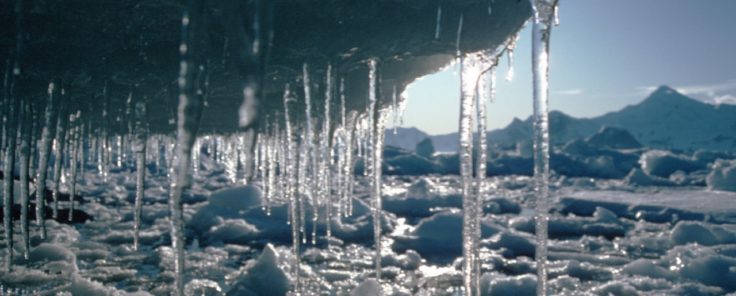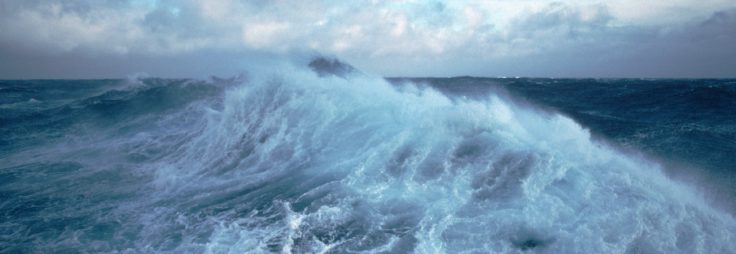To understand and minimise Earth’s climate change, and prepare for its impacts, are among the biggest challenges that humanity faces. Globally, our environment, livelihoods, culture and societies are increasingly threatened by extreme droughts, floods, heatwaves, and crop failures.
The Polar Regions have a disproportionate influence on ongoing and future climate change, which act on many different timescales. These include acting as a brake on global warming: the vast Southern Ocean absorbs excess heat and carbon dioxide from the atmosphere, while sea ice and snow act as a mirror and reflect solar radiation back to space. Although remote to many, the Polar Regions help to control the climate for every place and every person on the planet.

The impacts of climate change are also keenly felt at the poles. Shifting Southern Hemisphere wind patterns affect ocean currents which in turn threaten stability of ice shelves; they also influence the ocean’s capacity to absorb heat and carbon dioxide. Increased storminess breaks up sea ice floes and pushes them north into warmer waters where they melt. In both Polar Regions, the changing climate is affecting the type of clouds that form, which in turn affects precipitation and the amount of solar radiation that reaches the ground. The Polar Regions themselves are responding to climate change but in ways that affect the rest of the world.
The Polar Regions are among the most difficult places in the world to carry out research. Their remote and often inhospitable nature makes fieldwork challenging. And the complexity of their interconnected physical systems and many small-scale processes are difficult to recreate accurately in models. These challenges explain why many key polar processes remain poorly understood and why we can’t yet forecast the future of these regions, and their wider impacts, with enough certainty.

The world needs rapid progress on these critical knowledge gaps to support the goals of the United Nations’ Paris Agreement, to inform the ongoing international policy dialogue on how to address climate change, and to minimise the negative impacts of climate change. BAS is at the forefront of this scientific effort, with world-leading capability to make climate-relevant measurements, expertise in next generation modelling approaches, and a pioneer in applying innovative techniques. Working with partners both nationally and internationally, BAS will deliver critical science to address the global climate challenge over the next decade and beyond.
The challenge:
To determine how change in the Polar Regions impacts global climate and to provide the information needed by decision-makers in policy, industry, and society, to work towards securing a sustainable planet.
Our science targets:
- Understand the physical, chemical and biological processes that act and interact at the poles to govern regional and global climate, including the loss of land ice and sea ice
- Quantify the role of the Polar Regions in the physical, biogeochemical, and biological cycling of carbon
- Enhance our ability to robustly predict future climate change by improving key polar components of numerical modelling systems, including aerosol-cloud interactions
- Track the global-scale connections and climate consequences of changing ocean and atmosphere circulation, including via the sequestration and redistribution of ocean heat and carbon
- Use past polar records to better predict the scale and likelihood of future global climate change
- Provide actionable information on future impacts of polar climate change, regionally and globally, including assessing the consequences of polar-related nature-based solutions and other interventions in the climate system
